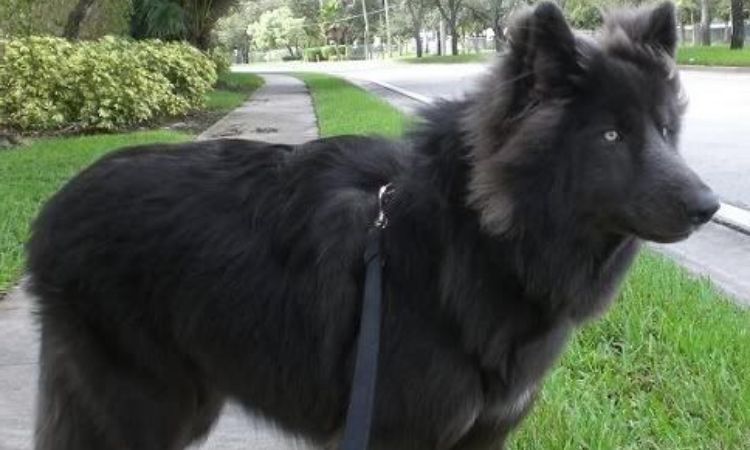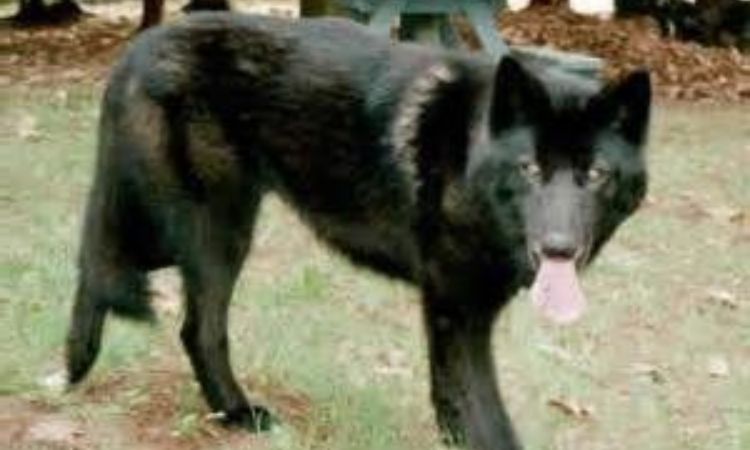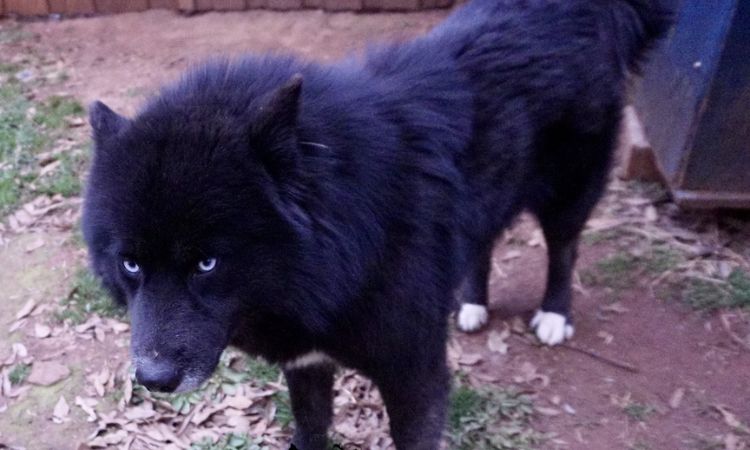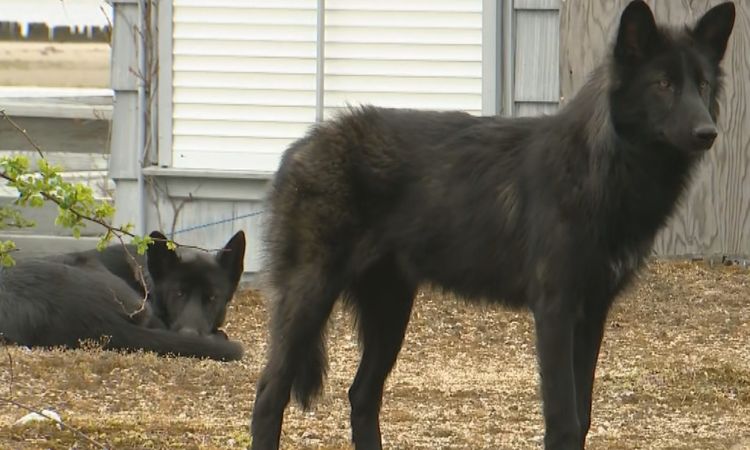The all-black Alaskan Malamute is a rare and striking variation of this iconic northern breed. Its deep, rich coat sets it apart from the more common gray or red tones, giving it a bold, majestic presence. Beneath the dramatic coloring lies the same powerful build, loyal temperament, and hardworking spirit the breed is known for. In this article, we’ll dive into what makes the all-black Malamute special from its unique appearance to care tips and personality traits.

Characteristics of the All Black Coat
The all-black Alaskan Malamute stands out as one of the rarest and most captivating coat variations in the breed. While Malamutes typically appear in shades of gray, red, sable, or black-and-white, the all-black variety features an almost uniform dark coat that creates a powerful and elegant silhouette.
This distinctive look is due to a dense layer of black guard hairs that overlays a thick undercoat. The guard hairs provide a glossy, deep black finish, while the undercoat may vary in shade—often appearing in tones of charcoal, gray, or even lighter hues depending on the season or lighting.
Though the breed standard from organizations like the American Kennel Club (AKC) recognizes a range of coat colors, true all-black Malamutes are relatively uncommon. However, as long as the coat displays the correct texture, density, and double-coat structure typical of the breed, black coloration is considered acceptable within the standard.
Subtle variations may still occur in individual dogs some may have slight shading around the legs or tail but overall, the all-black coat remains a bold and dignified representation of the Alaskan Malamute’s strength and resilience.
Coat Texture and Length
The all black Alaskan Malamute features a signature double coat that is built for endurance in harsh climates. This coat is composed of two essential layers: a thick, coarse outer layer made up of guard hairs and a dense, oily undercoat. The guard coat repels moisture and snow, while the undercoat provides critical insulation, keeping the dog warm even in sub-zero temperatures.
Typical coat length ranges from short to medium across the main body. However, longer hair is commonly seen around the shoulders, neck, hindquarters (also known as the rump), and the tail, which forms a plumed curve over the back. These areas often display a richer volume of fur, helping to emphasize the Malamute’s strong, wolf-like profile.
It’s important to note that the Alaskan Malamute’s coat should never be excessively long, soft, or trimmed — with the exception of the feet, which may be neatened for hygiene. A coat that deviates from the breed standard, such as one that is too silky or overly long, may reduce the coat’s effectiveness in regulating temperature and protecting the skin.
The natural oiliness and wool-like texture of the coat not only help the dog stay dry and insulated but also play a key role in maintaining overall skin health. These protective features, along with the dense build of the coat, make grooming a serious responsibility for Malamute owners — especially in the shedding seasons when the undercoat “blows” heavily.

Care and Maintenance of the Black Coat
The all-black coat of an Alaskan Malamute requires consistent care to maintain its shine, density, and protective qualities. Proper grooming helps keep the coat healthy and ensures it performs well in harsh weather.
- Daily brushing is essential, especially during the heavy shedding seasons in spring and fall.
- Malamutes experience two major shedding periods each year, known as “blowouts,” when the dense undercoat sheds heavily.
- During these times, using a rake or de-shedding tool helps remove loose hair and prevents matting.
Regarding bathing:
- Bathe your Malamute only when necessary, typically every few months, to avoid stripping the natural oils from their coat.
- Frequent baths can damage the oily layer that protects the coat and skin, reducing its water resistance and insulation.
- Use dog-specific shampoos and ensure the coat is thoroughly dried after bathing.
Signs of a healthy black coat include:
- A glossy, thick appearance with a coarse outer guard coat and a dense, woolly undercoat.
- The coat should retain its natural oiliness, providing essential protection against cold, moisture, and dirt.

Functionality and Performance
The all-black coat of the Alaskan Malamute serves as a crucial natural barrier, providing exceptional protection against harsh Arctic conditions. This dense, double-layered coat—composed of a coarse guard layer overlaying a thick, oily undercoat—shields the dog from biting winds, freezing temperatures, and moisture, ensuring the Malamute stays warm and dry during heavy snow and icy weather.
Despite its origins in cold climates, the all-black coat performs effectively across a range of environments. In colder regions, the dark pigmentation enhances the absorption of sunlight, subtly aiding in retaining warmth. Conversely, in milder or warmer climates, the Malamute’s oily and woolly undercoat works to insulate the skin and regulate body temperature by trapping air close to the skin and repelling moisture. The guard hairs help deflect heat and protect against sun exposure, preventing overheating.
While darker coats absorb more heat from the sun compared to lighter colors, the Alaskan Malamute’s unique coat structure supports efficient thermoregulation. The seasonal shedding cycle, with heavy undercoat blows twice a year, allows the dog to adapt to temperature changes—thickening the coat for winter and thinning it for summer. This balance enables the all-black Malamute to maintain comfort and performance whether pulling heavy loads in freezing weather or adapting to warmer conditions without compromising its endurance or protection.
Visual Appeal and Breed Standards
The all-black coat, while striking and powerful in appearance, is officially recognized within the Alaskan Malamute breed standards. Although not the most common color, black is an accepted and admired shade alongside traditional colors such as gray, sable, and red. The American Kennel Club (AKC) and other breed organizations acknowledge black as a legitimate and desirable coat color, provided the dog exhibits proper structure, movement, and temperament.
Distinctive face markings play a significant role in enhancing the visual appeal of an all-black Malamute. Typical patterns include a white mask, bars, or caps that contrast sharply against the dark coat, emphasizing the dog’s alert eyes and expressive features. These markings vary widely—from full facial masks to narrow blazes and snippets—adding individuality while remaining true to the breed’s classic look.

Differentiating an all-black Alaskan Malamute from other color variants involves attention to coat texture and markings rather than just color alone. Unlike some darker sable or seal coats, the all-black Malamute’s coat is uniformly dark with black guard hairs over a matching undercoat, while other variations may show more color gradations or lighter undercoats. Additionally, the presence of standard white points on the face, chest, legs, and tail tip helps confirm the dog’s identity as a true Malamute rather than another breed or color variant.
There are common misconceptions surrounding Malamute coat colors. For instance, some may confuse an all-black Malamute with a Siberian Husky or believe that certain colors, such as solid black or unusual markings, are faults or disqualifications. In reality, all-black is a recognized and accepted color when accompanied by correct breed characteristics. Misunderstandings often stem from the complex genetics behind coat colors and the broad spectrum of shades within the breed, but knowledgeable breeders and breed standards clarify these distinctions to preserve the Malamute’s unique heritage.






